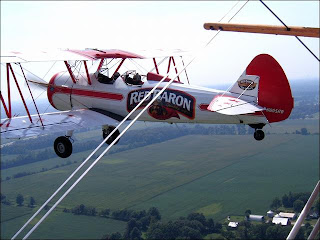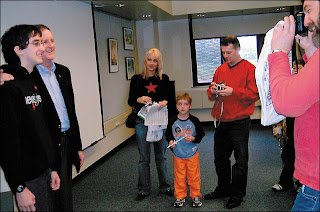
Once complete, the center will provide five times the classroom space and serve more than twice as many visitors each year. Jerry Battiste/Flyer photo/

Once complete, the center will provide five times the classroom space and serve more than twice as many visitors each year. Jerry Battiste/Flyer photo/
First Published: The Flyer, October 20, 2006 12:56 pm
By Jerry Battiste
INDIANAPOLIS — Excitement is building at Eagle Creek Park as construction on the new Earth Discovery Center enters its final phases.
Buried in the forest overlooking the reservoir, the building blends nicely with the surrounding greenery, despite the mud and construction equipment. In front, sidewalks are being poured; the parking lot will be next and the landscaping will follow shortly after that. By December, the center will be complete and programming is expected to be in full swing by spring of 2007.
Jim Weir is executive director of the Eagle Creek Park Foundation, a non-profit group formed in 1978 to support the park through volunteer and fundraising work. Membership now numbers more than 2,000. That’s twice as many as they had in 2001, but Weir said he expects that number to grow as the park continues to make itself more attractive to guests of all types.
Eagle Creek Park is already a popular destination for boaters, anglers and naturalists, but Weir said they want it to be a destination for everyone seeking an outdoor adventure in an urban setting.
“As we started to look into this, we discovered one of the larger user groups at Eagle Creek are runners and joggers,” Weir said.
Drive through the park just about any clear day, he said, and someone can be spotted cruising the paths. And regardless of the weather, someone is likely fishing somewhere too, he said. In fact, most of the members of the foundation are themselves regular users of the park who turned to volunteer work as a form of penance.
“One member told me he spent so much time at the park, every day riding his bicycle up and down the trails, that he felt guilty not doing something to help,” Weir said.
At 5,200 acres, Eagle Creek Park is one of the largest municipal parks in the nation and the only Indianapolis park tasked with funding itself. A $4 daily admission fee only goes so far, Weir said.
What foundation members felt they needed was a world class facility to build on its existing nature programming. The only question was, what sort of facility should it be?
Weir said the old Visitor Center at the park would see about 40,000 guests every year, half of which were school children from kindergarten to fifth grade. With this in mind, they set about designing the new Earth Discovery Center to better serve that group, and anyone else interested in having a learning experience during their visit to the park.
The foundation formed focus groups and queried local educators on what type of facility would best suit their needs. Soon, a plan was created and fundraising work began in earnest. Foundation members have so far secured more than $3.5 million for building the new center, but are still seeking another $1 million to cover the cost of programming.
Walking through the nearly-finished center, Weir makes no effort to hide his enthusiasm for the project. Students at all levels, from kindergarten through college to those attending adult-learning programs, are expected to study the environment using the park as their living laboratory.
“We call it ‘come in and get out’ because they can come into one of our labs, the wet lab or the dry lab, learn about a sector of the environment like the wetland, then go out into the park and actually experience that environment firsthand,” he said.
In the $650,000 exhibit area, four habitats will be represented: The forest, meadow, wetland, and reservoir. Lab tables and equipment for group study, interactive computer displays and remote cameras for observing specific park habitats up close, provide a variety of learning tools for teachers and students alike. It is expected the new Earth Discovery Center will see more than 100,000 visitors each year.
The old nature center, which sits along a protected bird sanctuary, will become an ornithology center, focusing specifically on the abundant species that call the park home.
Weir said the new center will be “much more science oriented as opposed to the traditional park nature center” but stopped short of calling it a school. Currently, the park offers a variety of learning programs but only has the capacity for one class at a time. The new center will have room for up to four simultaneous classroom groups. Student attendance at park programs is expected to rise from 22,000 visitors a year to closer to 50,000.
“We don’t expect to have that many students right at the get-go,” Weir said. But he said he expects the center “will easily reach that number” once the programming is in full swing.
The new center is a subtle addition to the quiet forest in which it sits, but Weir hopes it will be a powerful force in the community.
“It is the first of its kind,” Weir said of the center and the proposed programming. “But what we believe is that once finished, it will become the model for what a nature center should be at parks all across the nation.”
This story originally appeared in The Hendricks County Flyer, 2006.






